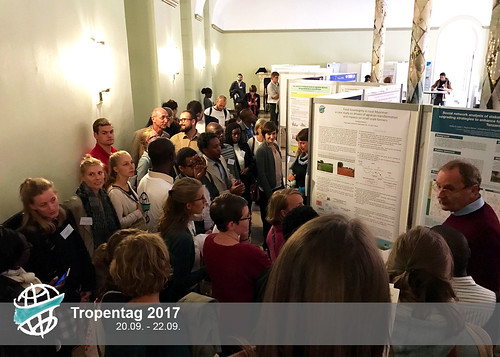institutions
Late start. Inaudible. THE NEW DIRECTION OF AG!
Wed, 09/20/2017 - 19:42 — megreslerOne audible theme carried across the session: a need for distinctly long-term thinking when seeking solutions for food system transformation. Despite the challenging circumstances, the fourteen presenters of Poster Session 1 "Institutions and Livelihoods" on Wednesday afternoon brought innovative research into discussions of gender and rural sociology.
From whether childhood experiences influenced the decision to migrate or not from rural areas in Ethiopia, to considerations of gender and social hierarchy in forward-looking decisions within Tanzanian vegetable production, these posters were representative of the direction future agricultural research is moving in.
While not complaining about the additional 60 seconds added to her presentation time due to the late-start and missing presenters, Mst. Tania Parvin from the University of Hohenheim explained, "I think next time we should start on time... the last person might be presenting in front of no audience."Speaking from an air of frustration with the volume of the presentations Parvin's colleague Mary added the suggestion, "Maybe next time they should provide a mic?"





